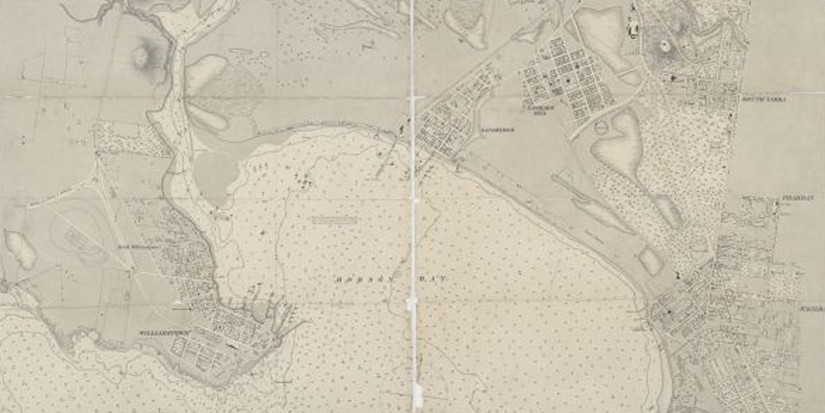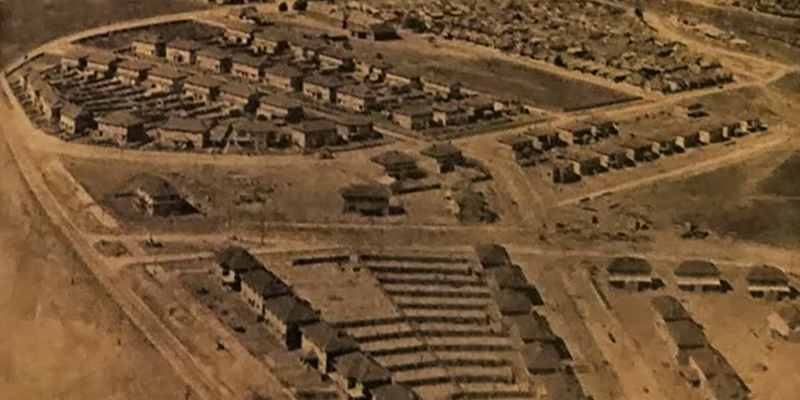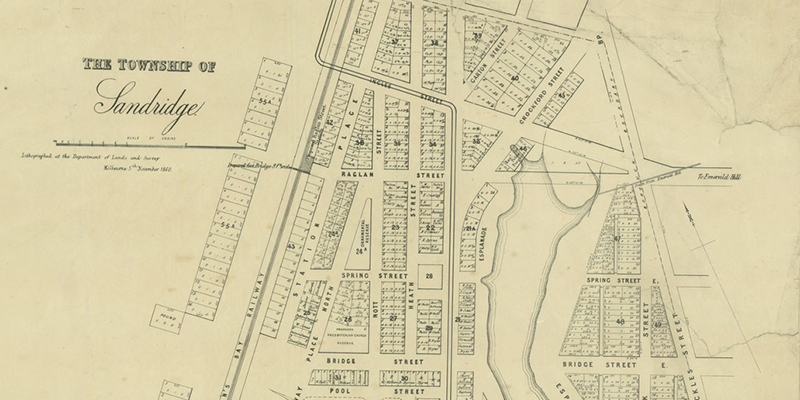Chart of Hobson's Bay by H L Cox (1864)
The landscape of Port Melbourne has been hugely changed by human intervention since white settlement. The shape and course of the Yarra River has been changed, the swampy terrain is now covered with roads and other hard surfaces, and there is a new land mass at the mouth of the river.
Janet Bolitho's presentation, Mapping…



